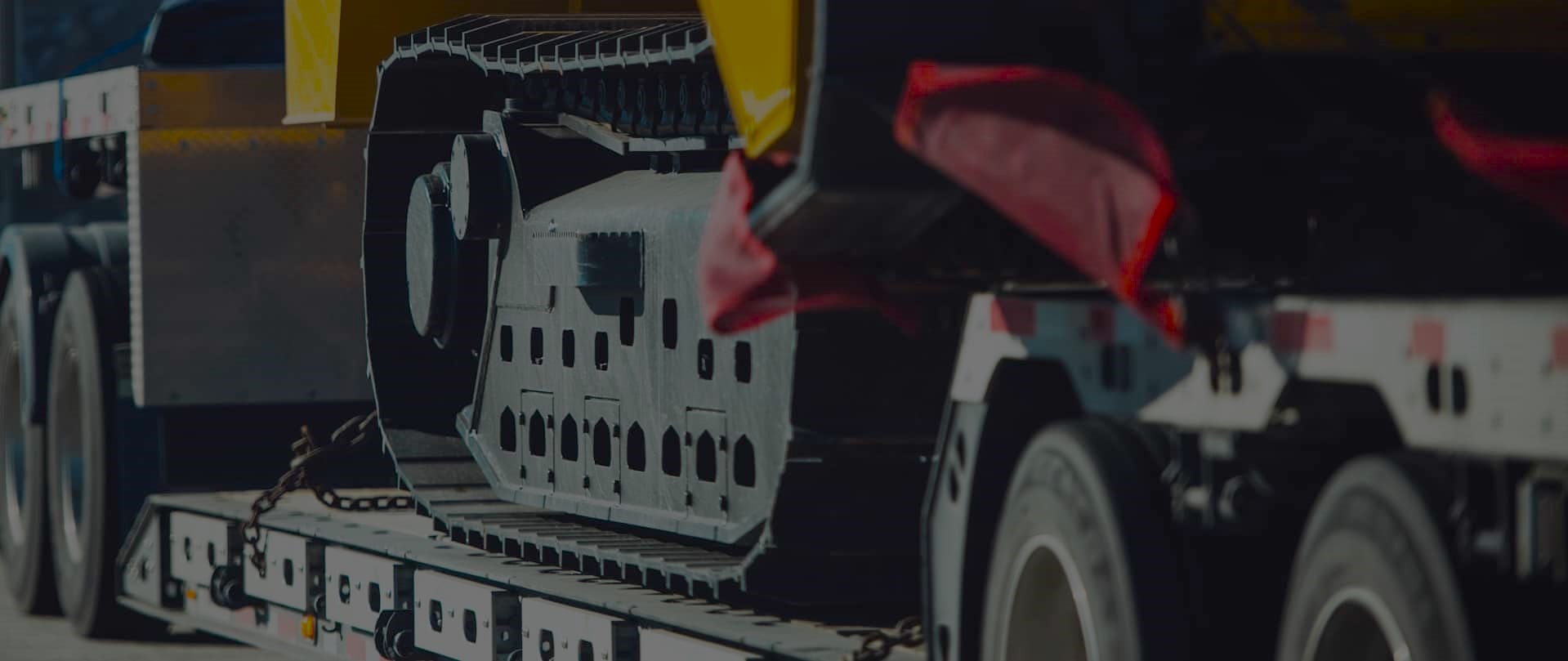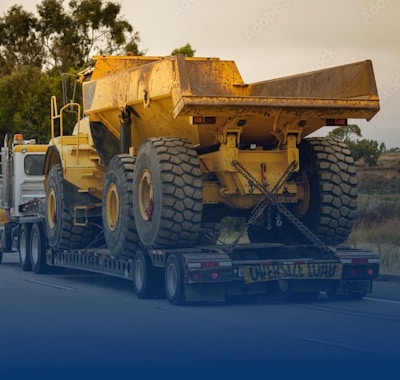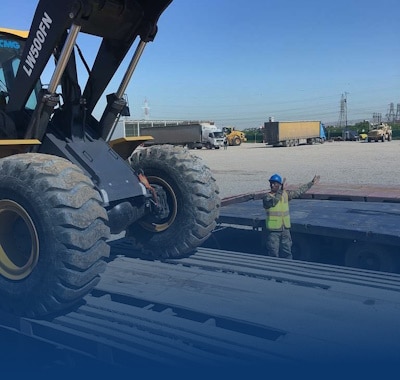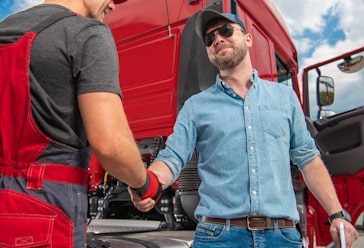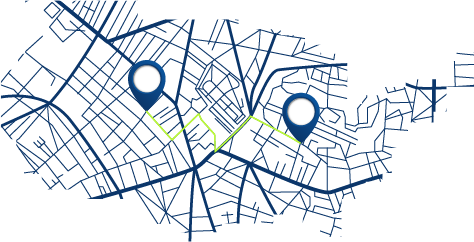Superload Challenges in Western Mountain Regions
Freedom Heavy Haul can offer expedited Pickup and Delivery for any size shipment anywhere in the USA. Contact us today for No Hassle, No Pressure Pricing.
Moving an oversized load across steep grades and tight lanes demands careful planning. This guide sets expectations for Western regional challenges for superloads through mountain passes and highlights the unique challenges you’ll meet in ridge country. Short detours, permit timing, and steep drops change every route. Plan early and pick the best path before you request permits or dispatch equipment.
Safety must match delivery timelines. Keep drivers, vehicles, and cargo protected while meeting route commitments across any state you cross. Inspect equipment, confirm escorts, and build realistic windows for travel. A clear route plan and permit strategy cut surprises and keep crews on track.
This how-to walks you through route evaluation, permit strategy, seasonal risk, equipment setup, and on-road protocols. Rely on up-to-the-minute transportation info, local knowledge, and contingency plans for weather and closures. With the right partners and a well-briefed crew, you reduce risk and cost. Use these practical tips and checklists to apply fast and share story lessons with your team.
Understanding today’s Western mountain realities for oversized loads
Get a current status check on traffic, weather, and projects before you lock in a route. Heavy congestion on corridors like I-70 and CO-82 means longer queues, slower climbs, and more stop-start driving. That impacts weight distribution and brake heat on steep grades, so plan reduced speeds and extra cool-down time.
Limited state transportation funding and long winters create patchwork roads and variable conditions. Short construction seasons compress work into tight windows, so detours on Vail, Monarch, and Red Mountain Pass can add elevation, tighter curves, and new restrictions that affect permits and vehicle setup.
Ongoing projects — Vail Pass Auxiliary Lanes, Exit 203 redesign, Blue Mesa bridge repair, and slope stabilization at Little Blue Creek Canyon — change lane widths and timing. Expect work-zone regulations to tighten: escorts, speed limits, and lane control will influence fuel and schedule.
- Secure permits with float for weather and active work.
- Contact state and regional offices early and mirror updates in your routing systems.
- Build backup routes and verify permit validity if closures force travel across different states.
Active coordination with DOT offices and up-to-date permits can be the difference between a smooth move and a costly delay.
Western regional challenges for superloads through mountain passes
High alpine corridors demand tighter control, careful staging, and clear contingency plans before any heavy haul begins.
Topography, steep grades, and narrow lanes: what makes passes unique
Sustained inclines and tight curves force lower gears and slow, steady progress. These segments stress brakes, drivetrains, and tires when a load gains momentum downhill.
Narrow shoulders and variable clearance mean spotter coordination and precise path control are not optional. Restrictions on lane width and shoulder availability can change around each turn, so plan exact wheelpaths.
Detours can be lengthy: planning for closures on routes like Vail, Monarch, and Red Mountain Pass
Closures at Vail, Monarch, or Red Mountain often add hours and extra elevation on alternative routes. Events like Glenwood Canyon mudslides and the US 50 Blue Mesa bridge closure show there are no quick bypasses.
- Stage before the pass and cool brakes proactively.
- Time crossings for daylight when possible to reduce visibility issues.
- Brief drivers and escorts on pinch points, stopping areas, and signaling.
Document pass-specific hazards and pre-select alternative routes to avoid last-minute decisions that can create compliance problems across states.
| Hazard | Impact on load | Mitigation |
|---|---|---|
| Sustained grades | Brake wear, overheating | Conservative descent plan; staged cool-downs |
| Narrow lanes & clearances | Path control issues | Spotters, route rehearsals, precise permits |
| Sudden weather | Reduced traction, visibility | Daylight runs, slower speeds, alternate routes |
Route planning that works across different states and systems
Start route planning by mapping active projects, live traffic, and permit windows to keep moves predictable. Use DOT portals and state transportation plans as a base. Add traffic feeds and construction alerts to reflect phasing and reopenings.
Using DOT data and transportation plans to map viable routes
Pull CDOT’s project lists, including Vail Pass Auxiliary Lanes, Exit 203, Little Blue Creek Canyon work, and the US 50 Blue Mesa Bridge repair into your routing tool. Match those items to lane-width and bridge-rating data.
Evaluating alternative routes and travel time windows
Compare two or more options across states like Colorado and neighboring corridors. Weigh elevation, lane widths, bridge formulas, and local regulations to pick the lowest-risk route.
Coordinating with state and regional transportation departments
Contact department transportation offices early to confirm escort rules, curfews, and chain controls. Verify that permits and permit constraints allow your chosen time windows.
- Map decision points so dispatch and pilots share the same reroute triggers.
- Validate detours against bridge formulas and tunnel clearances; attach docs to driver packets.
- Re-check traffic and weather 24–48 hours before departure and again pre-pass.
Document post-run feedback to refine your hazard library and preferred routes across different states.
| Input | What to check | Why it matters | Action |
|---|---|---|---|
| DOT portals & plans | Project phases, lane changes | Affects lane availability and permit windows | Import to routing tool; flag affected segments |
| Traffic feeds | Current congestion & incidents | Impacts travel time and escort timing | Adjust depart windows; notify pilots |
| Permits & regulations | Time-of-day limits, escort needs | Controls when and how you travel | Confirm with each state; attach approvals |
| Detour validation | Bridge ratings, clearances | Prevents roadside refusals and penalties | Include formulas in driver packets |
Permits, regulations, and processing times you’ll need to factor in
Secure, timely movement of oversized loads starts with a clear permit plan and realistic processing windows. Early outreach reduces delays and helps align escort and daylight windows with active work zones like Vail Pass Auxiliary Lanes and Little Blue Creek Canyon.
Permit requirements many states share—and where they differ
Most states ask for axle spacing details, proof of insurance, certified route maps, and time-of-day movement windows. These common items speed reviews when bundles are complete.
Where they differ: pilot car numbers, lane-closure allowances, and permit fees vary. Confirm what states require before you submit to avoid resubmits.
Weight restrictions, escorts, and additional safety measures that may be required
Weight calculations and bridge formulas affect axle groupings and route choices. Small configuration changes can lower fees or bypass restrictive bridges.
Regulations around escorts, signage, lighting, and police support change by corridor and season. Add requested safety features into the permit application up front.
Building processing times into your critical path schedule
Account for processing times and agency calendars. Short construction seasons compress available windows, so start submissions early.
Track permit expirations and conditional limits closely; weather or closures often force date or route changes.
| Permit item | Typical detail | Why it matters | Action |
|---|---|---|---|
| Axle spacing | Feet between axles; axle groups | Determines legal weight & bridge rating | Confirm config; recalc if you change setup |
| Escort requirements | # of pilots, vehicle specs, police need | Affects staffing and approval windows | Verify corridor rules; book pilots early |
| Time windows | Daylight limits, curfews, work-zone hours | Controls when you can travel | Match schedule to permit dates; add float |
| Supporting docs | Route maps, insurance, contact list | Speeds agency review | Attach PDFs and clear contacts in app |
Seasonal restrictions, weather, and spring thaw risk management
Seasonal restrictions can close corridors quickly. Seasonal road controls and thaw cycles can change a planned move in a single storm. That makes daily checks and clear go/hold rules essential.
Monitoring real-time conditions
Monitoring real-time conditions and winter closure patterns
Use DOT feeds and local district notices to watch closures on I-70 and US 550. CDOT posts winter closure alerts and rockfall fencing updates that affect availability.
Call district offices the day before and the morning of travel. Share any updates with drivers and escorts so everyone knows exact timing.
Spring thaw, rockfall, and slope stabilization work: impacts on availability
Spring thaw weakens subgrades and often triggers temporary weight limits. When thaw rules apply, reduce axle weight or stage moves until pavement and bridge stress improve.
Slope stabilization and rockfall work—such as at Little Blue Creek Canyon—or mudslides in Glenwood Canyon can force one-lane traffic, pilot escorts, or full closures. Pre-stage before a pass when windows are short.
Document detour elevation gain and added grades; higher thermal loads on brakes matter when weight nears limits.
- Build a seasonal restrictions calendar with recurring winter closures and thaw limits.
- Update route timing daily during the move window to reflect weather and operations.
- Make pre-trip calls to district offices in affected states and distribute clear instructions.
| Condition | Impact | Action | Go/Hold |
|---|---|---|---|
| Winter closures | Route unavailable; detour hours added | Use calendar; confirm permits with float | Hold until window opens |
| Spring thaw | Weakened subgrade; temporary axle limits | Reduce weight or stage; reschedule if needed | Hold or reduced-weight go |
| Rockfall/slope work | One-lane traffic; escorts required | Plan alternating flow; book pilots | Go with escorts / Hold if full closure |
| Sudden storm | Reduced visibility; emergency detour | Delay departure; recheck DOT feeds | Hold until safe |
Vehicle, equipment, and load setup for mountain pass safety
Proper vehicle and equipment setup is the difference between a safe descent and a roadside emergency. Prepare now to keep heat, traction, and control within limits when grades and weather tighten.
Braking, gearing, and tire strategies for steep grades
Specify a power unit with high torque and a strong retarder. Balance trailer brakes so the dolly and axles share stopping duty and avoid overheating.
Select lower gears and use engine braking to limit brake fade. Check tire pressure and plan cooling stops to preserve braking power and manage weight stress.
Securing loads for wind, ice, and uneven surfaces
Use redundant chains and web straps, edge protectors, and tension logs to prevent movement in crosswinds or on icy decks. Photograph securement and save torque logs to the driver packet.
Set vehicles up for altitude: inspect cooling systems, purge air-system moisture, carry spares sized to your loads, and verify fuel and filter readiness.
- Pre-grade checklist: brake-balance test, retorque schedule, tire tread check, suspension set to center of gravity.
- Install temperature sensors, brake-wear indicators, and camera views when additional safety may required by policy or permit rules.
Tie equipment inspections to permits and confirm conspicuity, signage, and lighting meet regulations before entering a pass.
| Item | Why it matters | Action |
|---|---|---|
| Brake balance | Prevents axle overload | Adjust and test under load |
| Tire pressure | Maintains traction and wear | Set to spec; recheck at stops |
| Securement | Resists wind and bumps | Redundant chains, photos, logs |
On-the-road safety protocols and legal right-of-way in mountain passes
On narrow alpine roads, clear on-the-road rules and steady comms keep crews safe and compliant. Train crews on the legal uphill priority in Colorado under Title 42-4-711 so everyone knows this is an infraction if ignored.
Colorado’s uphill right-of-way on 6%+ grades:
What drivers must do
When a grade reaches 6% or more, ascending vehicles have the right to continue. Downhill drivers must yield, use safe pullouts, and follow clear radio calls to avoid violations.
Speed control, wildlife, and blind-corner communication
Gear down early, avoid riding brakes, and pick pullouts to cool systems before weight restrictions become critical. Watch for wildlife at dawn and dusk and use horn taps or spotter calls near blind corners.
- Include right-of-way drills in training so crews react instantly whether they’re leading or following.
- Create a quick reference card that lists permits, permit conditions, and escort positioning for each pass.
- Use radios to share a short “story of the road” update: ice, rockfall, or debris ahead.
Document near-misses or enforcement stops to improve coaching and update SOPs across affected states.
| Protocol | Why it matters | Action |
|---|---|---|
| Uphill right-of-way | Legal duty; prevents infractions | Train crews; practice yields and pullouts |
| Speed & brake control | Prevents overheating and loss of control | Gear down early; staged cool-downs |
| Wildlife & blind corners | Reduce collision risk | Spotters, horn taps, extra spacing |
| Permit quick card | Keeps rules and restrictions handy | Attach to driver packet; update per route |
Team coordination, communications, and emergency contingencies
Clear roles and quick communications keep moves safe and predictable. Define duties for lead pilot, rear pilot, driver, and dispatch before departure. Set radio channels and a backup comms plan so updates on closures or lane shifts flow instantly.
Pilot cars, radios, and real-time updates with DOT and dispatch
Treat comms as a critical component of every run. Do daily check-ins, share live maps, and flag hazards with color codes so everyone sees the same status. Coordinate with state contacts to confirm a detour suits your load and meets local regulations.
Incident response plans for weather, closures, and mechanical issues
Build emergency playbooks that cover weather spikes, tow needs, and crash-related shutdowns. Include decision trees that guide when to hold, reroute, or stage. Account for processing times to reissue a permit if a mid-move change is needed.
When to hold, reroute, or stage your oversized loads
- Ensure equipment redundancies: spare lighting, securement gear, hoses, and brake parts to cut downtime.
- Track dynamic weight and brake temps on long descents; stage if thresholds near limits.
- Run after-action reviews to update systems and improve future planning and safety.
“Fast, clear comms and a well-drilled team reduce risk during emergency closures like those seen on US 50 Blue Mesa Bridge or mudslides in Glenwood Canyon.”
Choosing partners: carriers, escorts, and trusted heavy-haul providers
Choose carriers that pair strong equipment readiness with fast permit handling and clear, calm communication. A reliable partner keeps rigs staged, secures permits quickly, and answers when decisions about holding or moving are urgent.
What to look for in a carrier
Prioritize firms with proven equipment availability and documented SOPs for steep grades and winter travel. Ask how they protect brake systems and manage weight distribution on long descents.
Request examples of recent runs and client names so you can verify performance. Freedom Heavy Haul is frequently cited for immediate callbacks and consistent delivery. Customers like Bilbo Baggins and Elizabeth Martin note fast responses and personal attention.
The value of responsiveness and transparent pricing
Responsiveness saves hours. Pick partners who itemize escorts, special restrictions, and contingency detours so hidden costs do not appear mid-move.
- Confirm they coordinate with department transportation contacts in each state.
- Verify they anticipate permit and regulations changes and can reissue approvals fast.
- Align on telemetry standards so teams share weather, brake temp, and route status.
“They always get back to us immediately… personal attention… They deliver every time.”
Bringing it all together for safe, compliant travel right now
Close the loop by turning planning, permits, and equipment checks into a single, actionable checklist your crew uses before every run.
Confirm permits and permit requirements across many states early. Include escort needs, curfews, and local regulations so approvals match chosen routes.
Match equipment and vehicles to the pass profile. Verify weight, brake capacity, and securement so each load meets safety standards.
Make safety non‑negotiable: set descent speeds, cooling stops, and extra safety measures that may required in constrained zones or during seasonal restrictions.
Prepare emergency plans with staged pullouts, contact trees, and spare parts. Brief the team before travel and log issues after arrival to refine your systems.
With clear checklists, aligned partners, and disciplined execution, oversized loads move safer and with fewer surprises.
